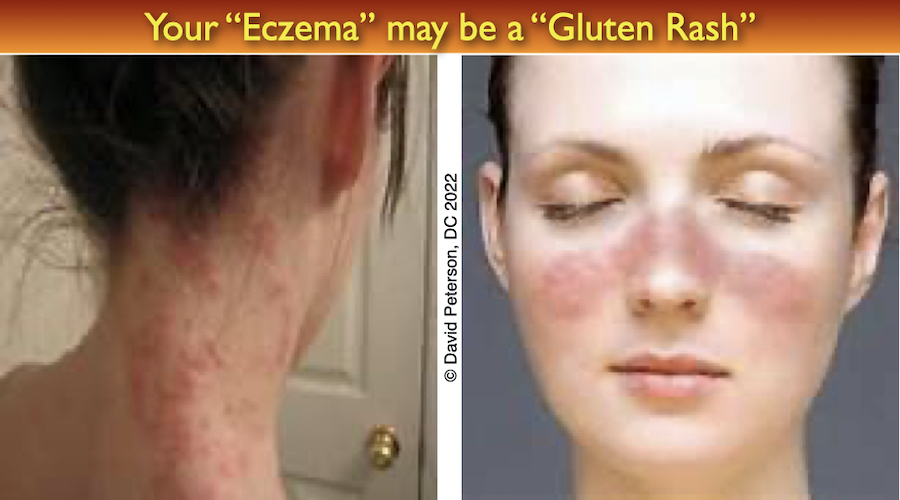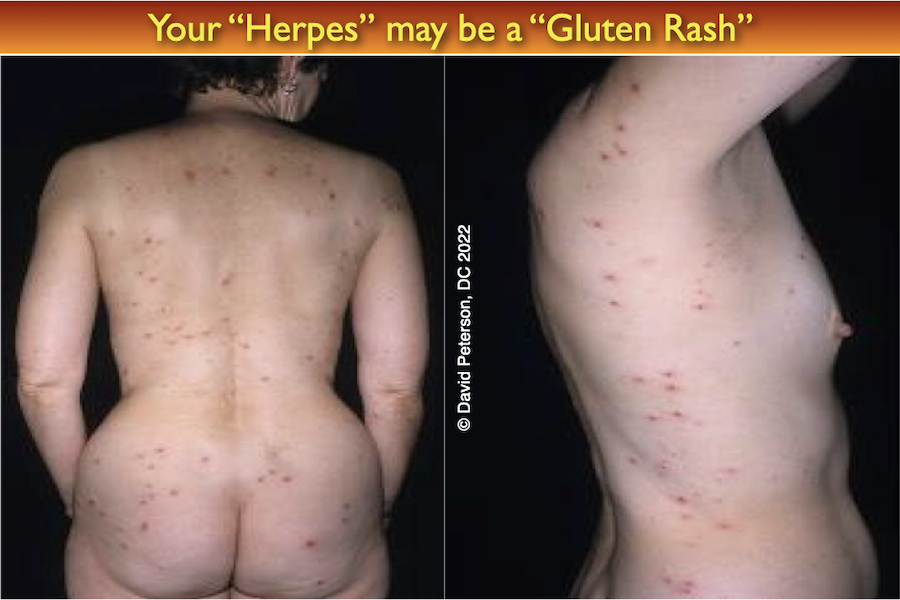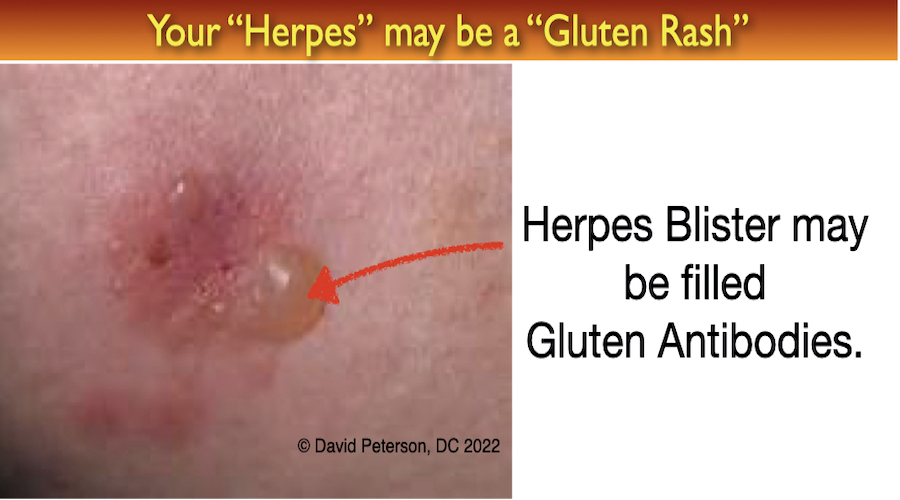Are suffering from occasional herpes out breaks on areas of your body but not on the genitals? Those with a sensitivity to gluten, often develop blistering rashes that are often mistaken for a herpes outbreak.
The Connection Between Herpes Breakouts and Gluten
Is there a possible link between herpes breakouts and gluten? Years ago, a dermatologist conducted tests on the fluid from herpes breakouts. The surprising discovery was that the fluid was rich in gluten antibodies. Based on these findings, the dermatologist began recommending a gluten-free diet and supplementation with products like GlutenFlam. The results were remarkable — patients reported a significant reduction in the frequency of herpes breakouts.
This suggests that gluten sensitivity may exacerbate or mimic other skin conditions, leading to misdiagnoses and ineffective treatments. Identifying and addressing underlying gluten sensitivity can potentially alleviate recurring skin issues.
How was your herpes diagnosed?

Many patients share that their doctors often suggest a history of promiscuity in their youth as the reason for their herpes diagnosis. This assumption can serve as a convenient explanation, discouraging further investigation into other potential causes.
Are you frustrated because the herpes medication doesn’t seem to control it or provide any relief? A good way to control the herpes outbreaks would be to identify the causes, and take effective measures to ensure that they remain out of your daily life. What if your herpes outbreak wasn’t caused by virus. What then?
What is Dermatitis Herpetiformis?
Dermatitis Herpetiformis is a skin manifestation of gluten-sensitive enteropathy. It results from the immune system’s abnormal response to gluten ingestion. While celiac disease typically damages the small intestine, DH primarily affects the skin, causing clusters of blisters and red, itchy lesions.
Common Symptoms of Dermatitis Herpetiformis

People with DH often experience the following symptoms:
- Intense Itching and Burning: A characteristic feature, often preceding the appearance of the rash.
- Clusters of Blisters: Fluid-filled lesions resembling herpes sores.
- Red and Inflamed Skin: The skin around the blisters becomes red and irritated.
- Symmetrical Rash: DH commonly appears on both sides of the body.
- Scarring and Skin Discoloration: Repeated outbreaks may cause long-term skin damage.
Common areas where DH manifests include:
- Elbows
- Knees
- Buttocks
- Lower Back
- Scalp
Causes and Risk Factors

The root cause of DH is an uncontrolled immune response to gluten. Upon consuming gluten, the body produces Immunoglobulin A (IgA) antibodies. These antibodies accumulate under the skin, leading to the characteristic blistering rash.
Diagnosing Dermatitis Herpetiformis
Diagnosing DH requires a combination of clinical evaluation and specialized tests:
- Skin Biopsy: A biopsy is performed on unaffected skin near the rash to detect IgA antibody deposits.
- Direct Immunofluorescence: This test can confirm the presence of IgA deposits, which are a hallmark of DH.
- Blood Tests: Blood tests check for celiac disease antibodies, including anti-tissue transglutaminase (tTG) and anti-endomysial antibodies (EMA).
- Gluten Elimination Trial: Following a strict gluten-free diet may help to determine whether symptoms resolve.
Treatment and Management
Managing DH involves two primary approaches: medication and a gluten-free diet.
1. Medication
- Dapsone: A powerful anti-inflammatory medication that provides rapid relief from itching and rash. However, it can have side effects, so regular monitoring is necessary.
- Sulfapyridine or Sulfones: Alternative medications for those intolerant to dapsone.
2. Gluten-Free Diet
The most effective long-term treatment for DH is a strict gluten-free diet. Avoiding gluten-containing foods can reduce symptoms and prevent flare-ups.
Gluten-Free Foods Include:
- Fruits and Vegetables
- Lean Meats
- Dairy Products
- Gluten-Free Grains (e.g., Rice, Quinoa)
Foods to Avoid:
- Wheat, Barley, and Rye
- Processed Foods with Hidden Gluten
- Beer and Malt Products
Complications of Dermatitis Herpetiformis
Without treatment, DH can lead to several complications:
- Chronic Skin Damage: Repeated outbreaks can cause scarring and hyperpigmentation.
- Intestinal Damage: Untreated celiac disease can lead to malnutrition and increased cancer risk.
- Secondary Infections: Scratching blisters may introduce bacteria, leading to infections.
Living with Dermatitis Herpetiformis
A gluten-free lifestyle is essential for managing DH. Here are some practical tips:
- Read Labels: Always check ingredient lists for hidden sources of gluten.
- Cross-Contamination Awareness: Be cautious when dining out or in shared kitchens.
- Support Groups: Connect with others through gluten-free communities for advice and support.



